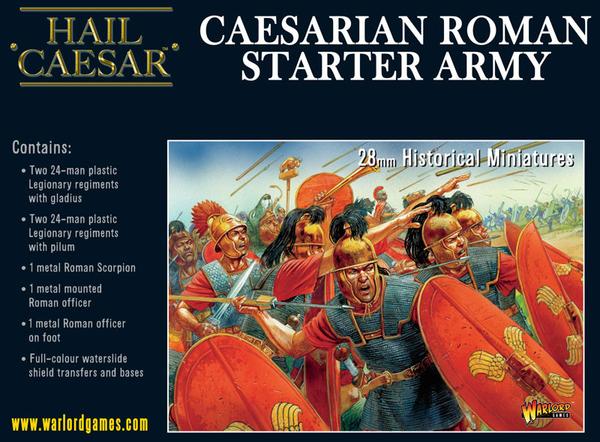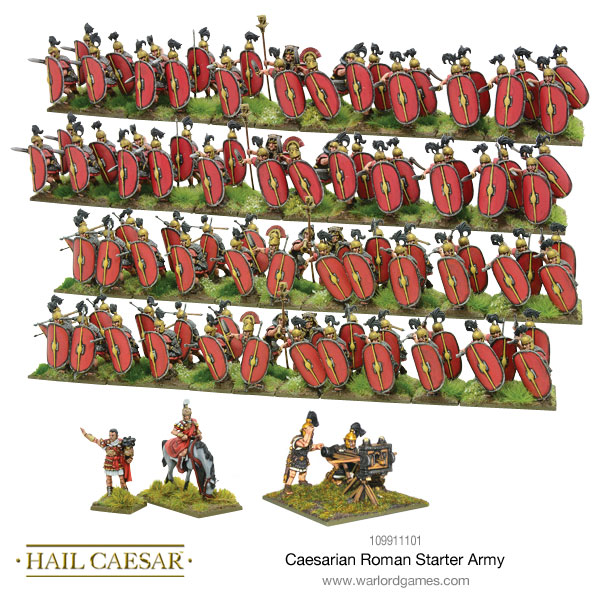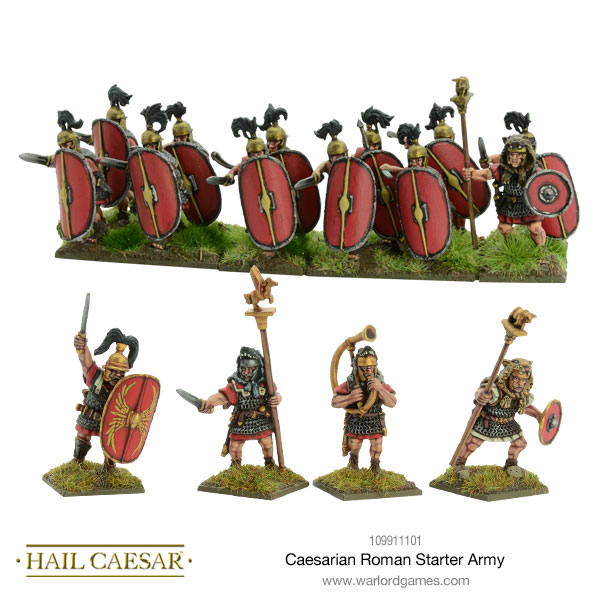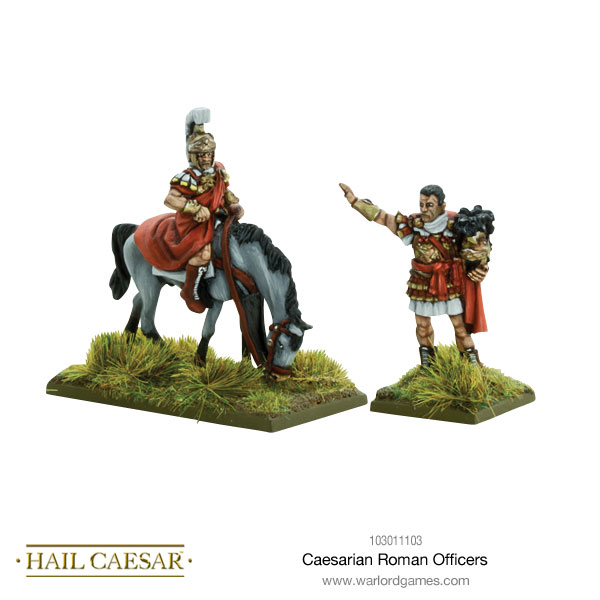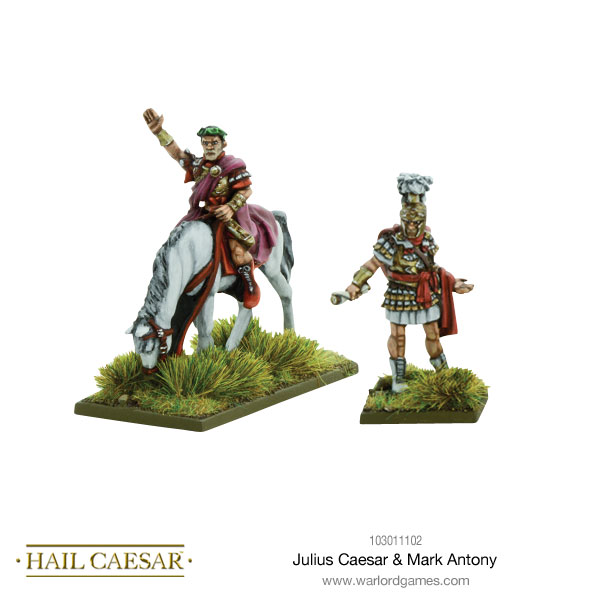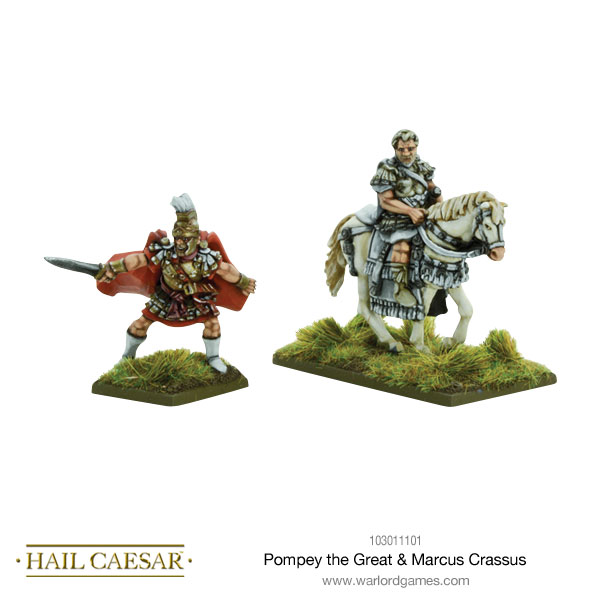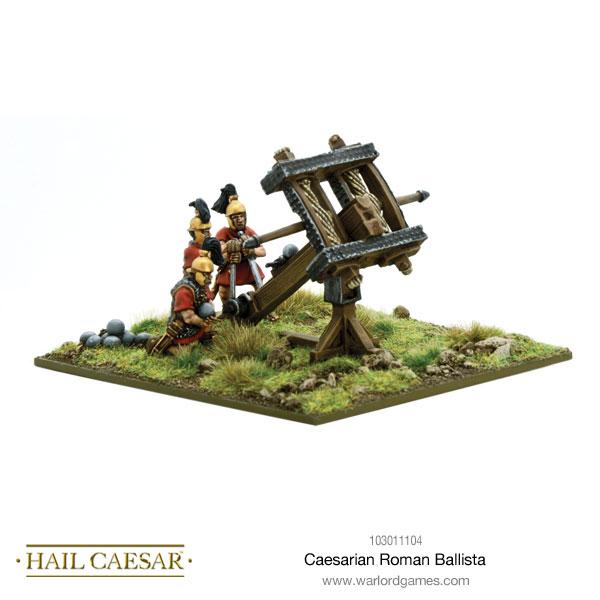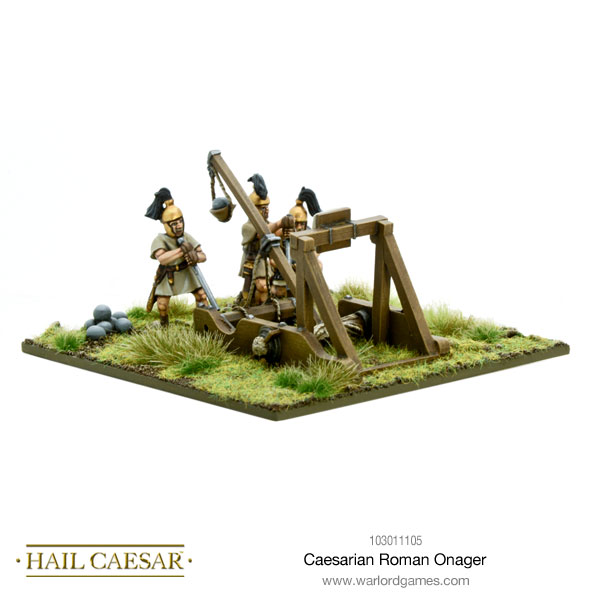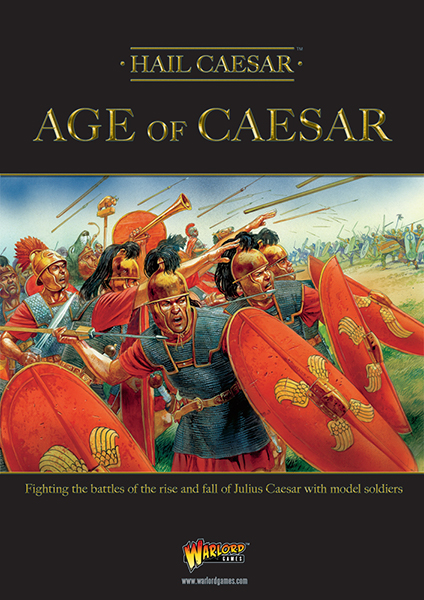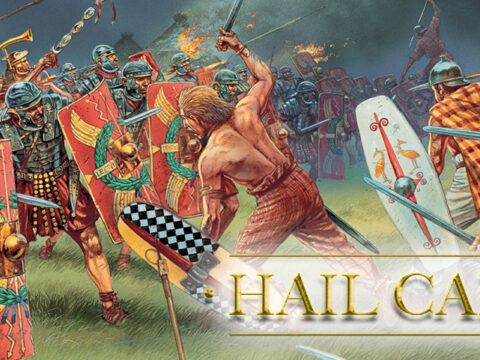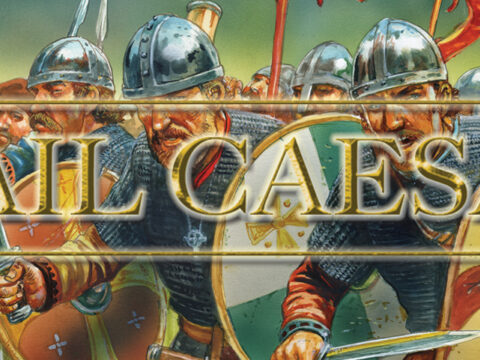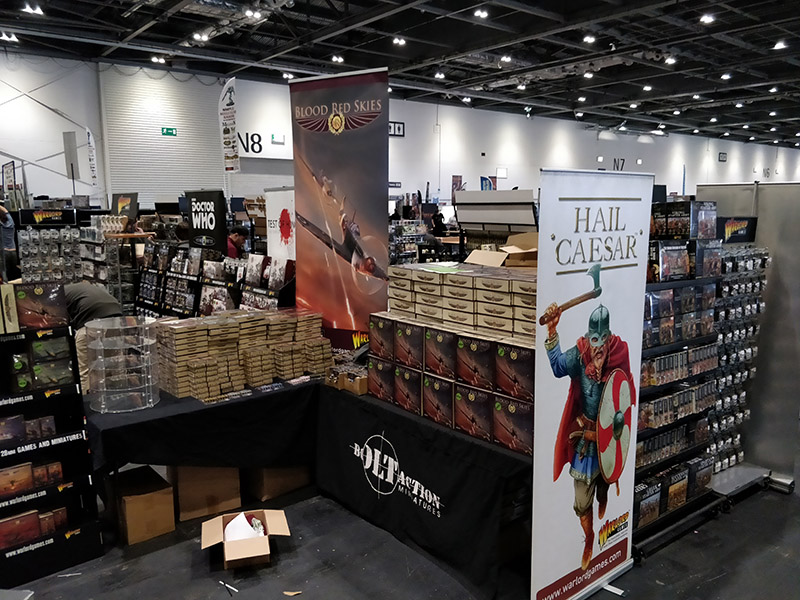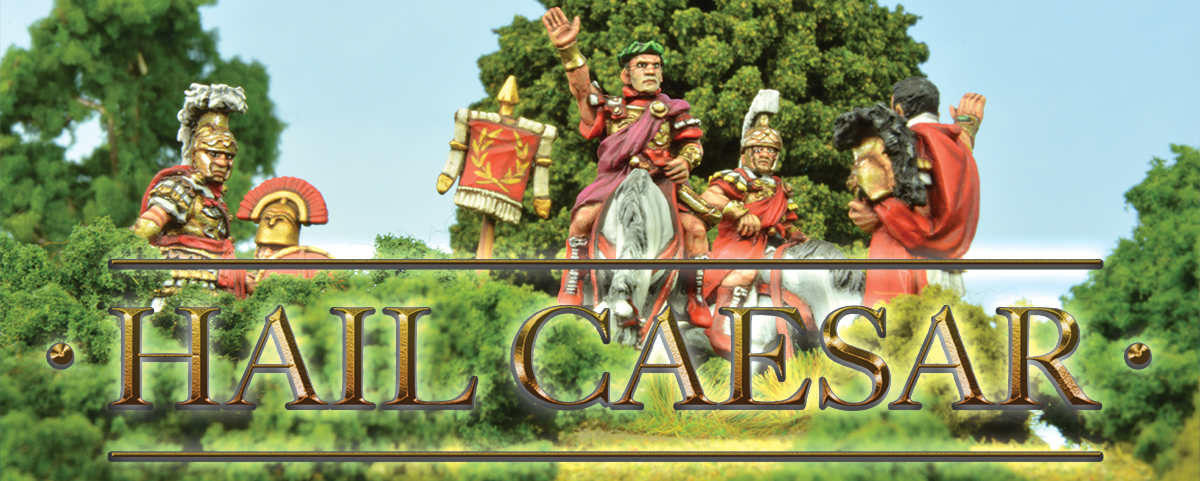
In death, the Romans made him a god. In life, Rome’s enemies suffered Gaius Julius Caesar’s wrath as if he already was one. Caesar was simply the greatest military commander that has ever lived. This makes him and his Legions a fascinating subject for miniature wargaming. We’re looking at collecting Caesarian Romans in Hail Caesar.
In battle after battle, across three continents, against multiple enemies and widely divergent military systems, Caesar emerged victorious. He never lost a battle. Chieftains and Kings kneeled before him in defeat before being led off to Rome in triumph after triumph. Caesar expanded the Empire in almost every direction but most notably into Gaul and on to the very limits of the known Roman world. Caesar even took on the great Roman commanders in a brutal civil war, and beat them too. His life was ended, not in battle, but as a result of treacherous Roman knives wielded through jealousy and fear. Caesar’s political and military legacy would endure for 2,000 years and his name has become synonymous with power in such titles as Kaiser and Tsar. For military historians, Caesar’s campaigns remain the textbook study of applied force and ruthlessness.
Collecting Caesarian Romans in Hail Caesar
The ideal starting point for beginning A Caesarian Roman Army is the Starter set. It represents fantastic value, containing:
- 96 plastic Romans
- 1 mounted officer
- 1 officer on foot
- 1 Scorpion & crew
- Full-colour waterslide shield transfers and bases
Caesarian Roman Officers
Lead your armies to victory with your choice of commander. Use these superbly detailed officers as one of the many positions within a Cohort:
- Decurion – Leader of a troop of cavalry (14-30 men).
- Optio – One per century as second-in-command to the Centurion.
- Pilus Prior – Senior centurion of the cohort.
- Primus Ordinis – The commanding officer of each century in the first cohort with the exception of the first century of the cohort.
- Primus Pilus – (literally ‘first file’, not spear) The commanding centurion of the first cohort and the senior centurion of the entire Legion.
- Dux – a general in charge of two or more legions.
History’s Greatest Leaders
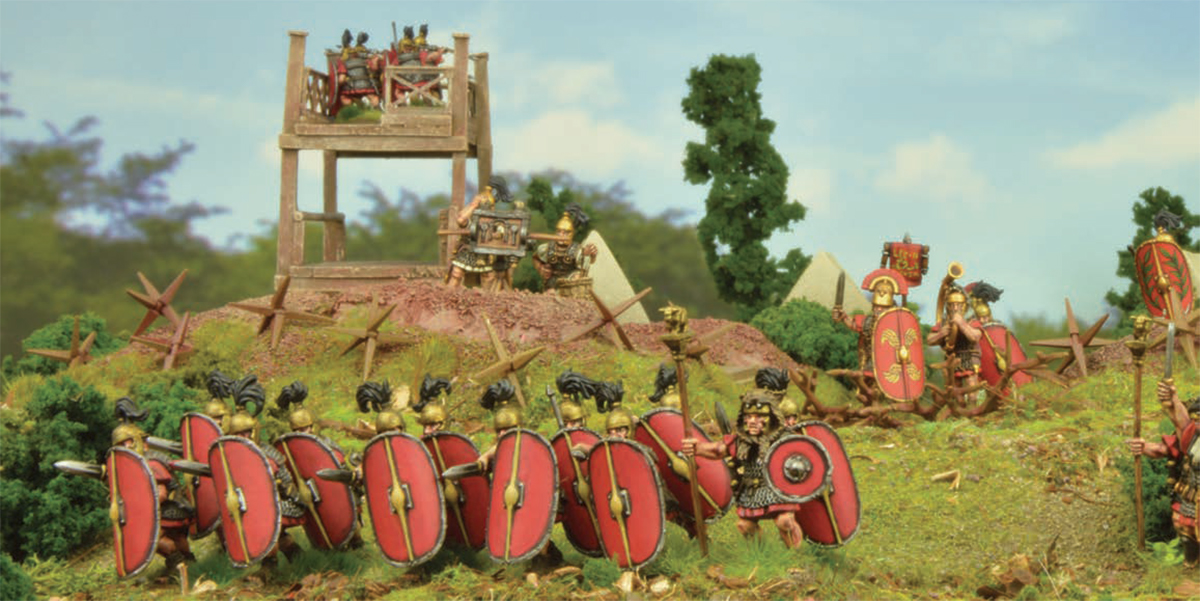
Julius Caesar
Gaius Julius Caesar (13 July 100BCE – 15 March 44 BCE) – an author of prose, formidable general and politician. His actions brought down the stuttering old Roman Republic leading to the rise of the early Imperial era. Forming a triumvirate with fellow political heavy hitters Marcus Crassus and Pompey the Great who watched the home fires of the senate whilst Caesar brought conquest to Gaul; even finding time to launch several adventures to the mysterious island of Britannia. He was also the first of his ilk to bridge the infamous Rhine to subdue the ever present threats of the Germanic tribes. His greatest act (some may say of treason) was to break all known convention and lead his legions across the Rubicon river starting several years of civil war.
Mark Antony
Known as Marcus Antonius (January 14, 83 BCE – August 1, 30BCE), Antony was a general and politician whose support was crucial for the changes that engulfed the latter half of the Republic. Antony was administrator of Italy. His early career saw him serve as a cavalry commander in Syria under Aulus Gabinius. After Caesar’s death he took the helm of the Caesarian party attempting to restore order to a fragmented Rome, later going to war against Caesar’s adopted son Gius Octavius.
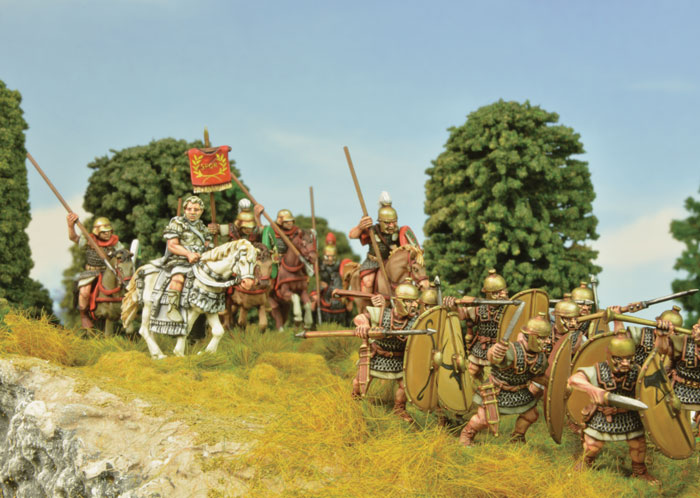
Pompey
Gnaeus Pompeius Magnus (29 September 106BCE – 29 September 48BCE) – from rich Italian stock and the old families of Rome, he was a controversial figure prone to bouts of military genius then towering moods of petulance and paranoia. Pompey earned his spurs under Sulla and his civil war against Marius where he was granted the title “magnus”, “the great”. He was also instrumental in the crushing defeat of the Sicilian pirates and the forces of Mithridates VI. He took the plaudits for defeating the renegade slave Spartacus causing a rift that was never to heal with Marcus Crassus. As Caesar led his forces against the senate, Pompey stood against his former friend. At several points Pompey could have turned the war but for the dithering and interference of the bickering senate. His life ended in ignominy at the hand of an assassins blade in Pelusium after his final defeat against Caesar at Pharsalus.
Crassus
Marcus Licinius Crassus (115BCE – 53BCE) – the third spoke in the triumvirate alongside Caesar and Pompey, he was considered one of the wealthiest Romans of his time, another veteran of the dictator Lucius Cornelius Sulla, he gained his fortune buying and selling real estate. His first real break as a field commander coming in the defeat of the renegade slave Spartacus, though he would be robbed of the coup de grâce by Pompey and his legions. As with all great egos, pettiness and mistrust tore at the fringes of their relationship. Caesar at the Lucca Conference restored order to the trio, but it was upon his Governorship of Syria that the seeds of Crassus’ downfall were planted. Crassus led an ill-fated campaign against Rome’s bitter Eastern enemy the Parthians, and fell at Carrhae. Within a handful of years Caesar would light the touch paper that would ignite another bout of bitter civil war in Rome.
Cavalry
The horsemen of the later Roman Republic were unlikely to be Roman at all. Caesar famously recruited his cavalry from among the Gauls and Germans that he fought and allied with during his campaigns of conquest.
During the Civil War, Pompey raised a huge army from his strongholds in the eastern provinces. These included cavalry units from Greece and Thrace, as well as those from further afield in Anatolia and Syria. Roman cavalry were equipped along much the same lines as auxiliary infantry, with iron mail armour, bronze helmets, and a mix of stout spears and light javelins they could throw.
Although far from numerous, cavalry played a decisive part in many battles of the period, including at the battle of Pharsalus when Pompey’s cavalry drove away Caesar’s numerically inferior horsemen, only to fall into disorder when Caesar brought his infantry reserves forward to counter the milling mass of riders. The ensuing rout carried the Pompeian army with it – and that is why today we say, ‘Hail Caesar!’ and not ‘Hail Pompey!’
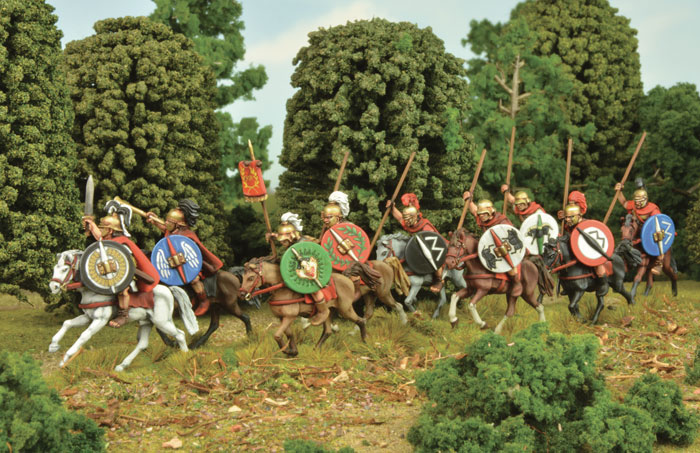
Long Range Support
Caesarian Roman Ballista
Marching to war, the legions would not be without their support. Loaded with bolts or stone ‘shot’ the ballista was a highly accurate weapon (there are many accounts right from its early history of single soldiers being picked off by the operators).
Caesarian Roman Onager
Able to fling a missile great distance, the Onager was used for besieging forts or settlements. Onager would often be loaded with large stones or rocks that could be covered with a flammable substance and set alight. Perfect for devastating your foes!
Age of Caesar
Join the mighty Caesar at the beginning of his glittering career of conquest and refight one of his most famous battles against those heinous enemies of civilisation, the dreaded Germans led by none other than that ambitious fiend Ariovistus of the Suebi.
March with Caesar’s legions into the land of implacable savages as our hero subjugates the barbarous Gauls and confronts that most dangerous of moustachioed monstrosities the treacherous chieftain of the Arverni tribe, Vercingetorix.
Cross the Rubicon and cast your own dice as Caesar pursues his rival Romans across continents in the Roman Civil War, facing his most deadly challenge yet in the form of famed conqueror of the East, Pompey the Great. Fight by Caesar’s side as he wages war for mastery of the Roman World upon battlefields soaked in Roman blood.
With this supplement for Hail Caesar we invite you to come, see and conquer for yourself in a series of new scenarios representing key battles in the career of Julius Caesar. We take a detailed look at the armies of Rome and her enemies, and we consider the lives of some of the greatest Roman commanders of them all, together with suitable rules to represent them on the tabletop.

